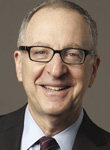Cornell to participate in research on head injuries in sports

Cornell, along with the rest of the Ivy League, will collaborate with the Big Ten athletic conference and the Big Ten Committee on Institutional Cooperation (CIC) on research into the effects of head injuries in sports.
The newly announced partnership between the Big Ten and the Ivy League follows recommendations from an all-Ivy League committee, founded in 2010 and co-chaired by Cornell President David Skorton and Dartmouth President Jim Yong Kim -- both medical doctors -- that discussed how to limit concussive hits in football.
The Ivy partnership, which included input from Ivy League football coaches, administrators, physicians and others, submitted recommendations that took effect in fall 2011. The recommendations included limiting the number of full-pad contact practices that can take place throughout the football year, and further emphasis on educating student-athletes on proper tackling techniques and signs and symptoms of concussion.
"Bringing our institutions together in this transformative initiative simply made sense," Skorton said of the new partnership with the Big Ten. "President Kim and I believe this collaboration will lead to new forms of preventive and therapeutic action to counter the immediate and long-term harm of concussions and enhance the well-being of our student-athletes."
According to a press release issued jointly by the Big Ten and Ivy League, over the past year the two conferences have engaged in discussions to examine the feasibility and benefits of collaboration, while outlining the framework and objectives associated with the initiative. Through academic research and shared resources, the collaboration will seek to promote positive and constructive change for injury assessment and improved long-term outcomes.
In addition to establishing a core leadership group to help lead the initiative, each conference will identify researchers and related participants from each school, as well as a few selected external subject-matter experts. This will help develop a research network of sports medicine personnel, neurologists, neuropsychologists, neurosurgeons, biologists, epidemiologists and other experts to set up and implement research protocols across the group.
Formal collaboration between the Big Ten and the Ivy League will extend the work already undertaken separately by both conferences over the past two years on issues related to head injuries in intercollegiate athletics. Among their accomplishments, according to the joint press release:
- Developing a "Concussion Management Plan" for use by conference institutions, including baselines for return to academic and athletic activities (Big Ten, 2010);
- Conducting presidential discussions concerning existing data and research on concussions in athletics and identifying steps to enhance student-athlete safety (Ivy League, 2010);
- Developing a "Concussion Return to Play Checklist" and obtaining agreement from athletic medicine staffs to use the checklist as a guide for their respective schools (Ivy League, 2011);
- Conducting a Head Injury Summit, with 40-plus attendees across several disciplines, including athletic medicine, neurology, neuropsychology, physics, engineering and biological sciences (Big Ten/CIC, 2011);
- Creating a centralized data-sharing platform to enhance existing surveillance and research and accelerate new inquiries into concussions (Big Ten/CIC, 2011);
- Convening additional ad hoc committees to review concussions in men's and women's ice hockey, soccer and lacrosse and make recommendations for those sports (Ivy League, 2012); and
- Launching a research initiative regarding how head injuries affect athletes in all sports (Big Ten/CIC, 2012).
Media Contact
Get Cornell news delivered right to your inbox.
Subscribe